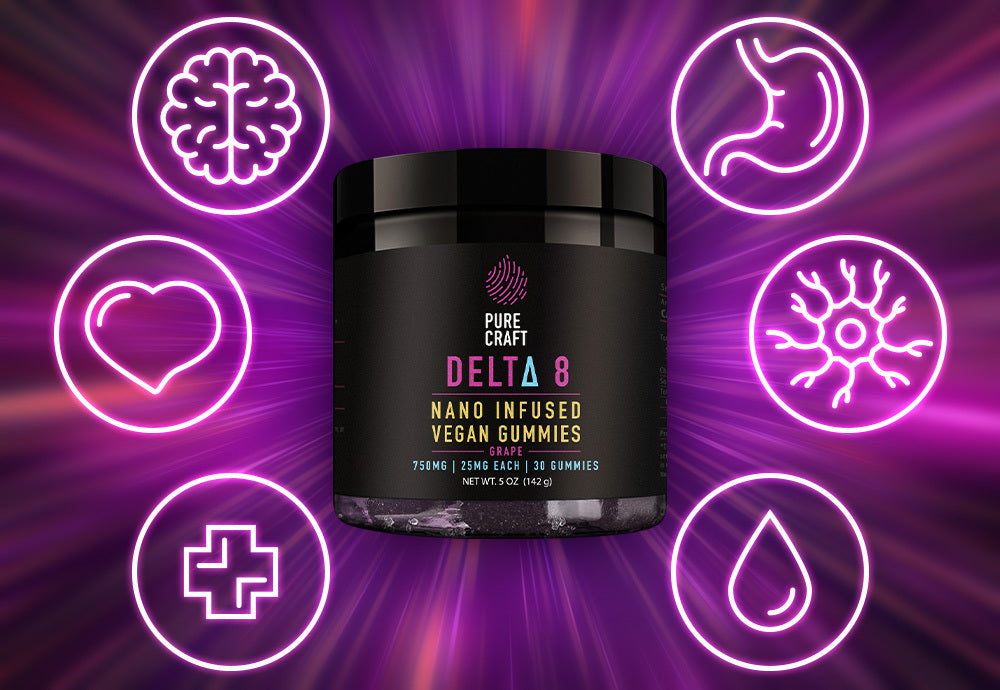Your Cart is Empty
FREE SHIPPING ON ORDERS $70+ | SATISFACTION GUARANTEED
Sure, hemp and CBD are hot topics today. But did you know that both hemp and CBD have a long legacy? They’ve been being cultivated and used for millennia by many different cultures around the world.
Hemp’s an extraordinary plant! You may be surprised to learn all about its evolution, cultivation, industrial uses and more. You just may walk away from this post with some newfound respect for this mighty herb.
Hemp (along with marijuana) is a plant of the Cannabis sativa L. species. You may also hear hemp called industrial hemp; this is generally to highlight its many applications. (We’ll get back to that in a moment!)
You probably have a good idea what this iconic and much talked-about plant looks like. In case you wouldn’t be able to pick it out of a lineup, let us paint a picture for you. This green herb has long stalks, distinctive leaves, and small greenish-yellow flowers. Hemp is often taller and rather slender compared to marijuana, which tends to be stout and bushy.
Another great thing about hemp is how accommodating and robust it is. Hemp’s found on every continent except Antarctica. It has been able to adapt to a variety of environments, though it does best in temperate climates with reasonable environmental moisture. Like bamboo, hemp grows insanely fast so it’s a highly renewable crop.

Hemp is an ancient crop. The first traces of hemp were discovered in western Asia (in what’s now Iran and Iraq). There, archaeologists found fragments of hemp fabric that’re about 10,000 years old.
From this region, agricultural cultivation of hemp spread deeper into Asia. There are records of hemp being used in China as far back as 2800 BC. And Russia has grown hemp for hundreds of years as well.
Hemp made its way to Mediterranean countries the early Middle Ages and the rest of Europe by the end of the 15th century. As trade and exploration from Europe expanded during the 1400s, hemp found its way to South America. According to some sources, it didn’t take much longer for it to start being planted in North America. (Other sources believe hemp was already here, though.).
We don’t want to bore you with the loooong ins and outs of hemp’s legal profile. So here are the highlights:
Hemp is incredibly versatile. In its long lifetime, people have found countless ways to use it. There’s historical evidence of hemp being used for everything from foodstuffs, herbal remedies, textiles and biofuels. And because humankind has such great ingenuity, we’ve figured out how to use almost every part of the plant.
Experts and historians believe hemp’s one of the oldest crops grown specifically for its fibers. These fibers can be processed into raw materials for other goods.
Here are just some of the items fabricated from hemp:
Hemp’s an age-old food source and ingredient in other foods and personal care products. It also has a long history of medicinal use (various gastrointestinal, skin and inflammatory conditions), though there’s no scientific proof backing these remedies.
Check out some of the culinary and self-care applications of hemp:
CBD is another derivative of hemp. While CBD oil can be produced from other varieties of the Cannabis plant, hemp is a terrific source. The amount of CBD is higher in hemp than other varietals.
All sorts of products incorporate hemp-based CBD:

That’s a pretty good segue for diving into the CBD’s origin story.
CBD stands for cannabidiol. It’s one of many compounds, called cannabinoids, found in cannabis plants. If you’d like to learn more about the properties of CBD, check out this post.
Because CBD is a compound naturally occurring in hemp, it’s been used throughout the ages. However, purposely going after the CBD component in hemp and leveraging it for wellness benefits is definitely a modern thing.
American organic chemist Roger Adams “discovered” CBD in 1940. Through his research, he was able to distinguish CBD from other cannabinoids. In 1942, Adams received a patent for his process of isolating CBD. Subsequently, scientists have also created synthetic CBD.
Pharmacologic research on CBD as a medicinal substance began in the mid-1940s. Several important breakthroughs were made in the 1960s and 1980s. Results from this research led to therapeutic uses, including medications for treating conditions such as epilepsy.
Demand for CBD-containing products has ramped up since the US Farm Bills legalized low-THC hemp. (A 2019 Gallup poll asserts that 14% of Americans claim to use CBD products.) And now there’s a whole world of CBD products available, aimed at helping people with a wide range of mental and physical health issues.

Hemp has been around for millennia and is found in almost every corner of the globe. As a robust and versatile plant — with many industrial, culinary and medicinal uses — it’ll likely be around for a long time to come.
This isn’t to say hemp has had an easy time of it in the US. It went from being a highly encouraged crop to being banned to being somewhat relegalized within the last century(ish). This rocky road stemmed from powerful economic, political and social forces.
CBD, derived from hemp, has been studied since the 1940s. Ongoing research continues to find potential therapeutic benefits. With CBD’s more recent legality restored, a plethora of infused products are hitting the markets. They aim to help consumers manage a variety of mental and physical health conditions.

The cannabis compound CBD has been popping up in Parkinson’s disease (PD) therapy and prevention conversations, propelled by success stories from p...
Read More
CBD is one of the most popular supplements on the market today. But you're a savvy consumer. You know just because something is popular doesn’t mea...
Read More
You know delta-8 as "weed-lite" or the "chillest of the cannabinoids." But what about all the potential health benefits of this unique compound? Wh...
Read More